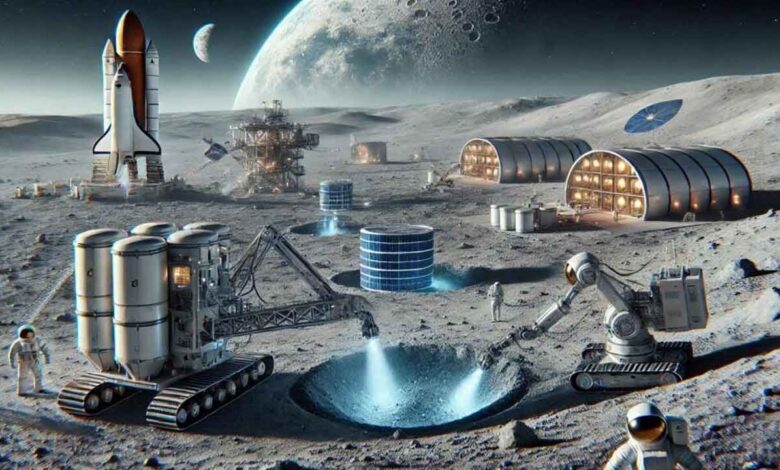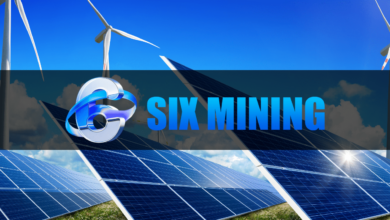Establish strong regulations before moon mining becomes commonplace

The disturbance of lunar dust means that some spots of the moon may appear brighter where the dust has been stirred up, while other spots may appear dimmer if the dust settles on top.
By the end of this decade, countries and private companies will likely be mining the moon. But as space becomes more accessible to more countries and companies, we have to stop and ask ourselves what commercial activities we want to allow, including on the moon.
Now is the time to establish rules and regulations that will protect humanity’s shared future in space and ensure that the Moon remains a symbol and inspiration for future generations.
Why mine the moon?
NASA’s multibillion-dollar Artemis program isn’t just about sending astronauts to the moon. It is about paving the way for mining operations. China is also on a similar path.
This has sparked a new moon race as private companies compete to figure out how to extract the moon’s resources, potentially selling them back to governments in the cosmic supply chain. Currently, all supplies needed for space exploration are shipped from Earth, making basics like water and fuel expensive.
By the time one liter of water reaches the moon, it will cost more than gold. But by converting water ice on the Moon into hydrogen and oxygen, we can fuel spacecraft on site. This could make deeper space missions, especially to Mars, much more feasible. The moon’s wealth of rare earth minerals, essential for technologies such as smartphones, also means that mining on the moon could ease pressure on Earth’s dwindling reserves. Private companies may outperform space agencies; A startup could mine the moon before NASA lands the next astronaut.
Change in outlook:
When material is extracted from the moon, dust kicks up. Without an atmosphere to slow its movement, this lunar dust can travel vast distances. This surface material is “space weathered” and is generally dimmer than the more reflective material underneath.
The disturbance of lunar dust means that some spots of the moon may appear brighter where the dust has been stirred up, while other spots may appear dimmer if the dust settles on top. Even small-scale operations may disturb enough dust to cause visible changes over time. Lunar dust management will be a critical factor in ensuring sustainable mining practices and minimal vandalism.
Who owns the moon?
The Outer Space Treaty (1967) makes clear that no country can claim to “own” the Moon, or any celestial body for that matter.
However, it is unclear whether a company extracting resources from the Moon is violating this non-allocation clause. There are two subsequent agreements that address this issue.
The 1979 Moon Treaty claims that the Moon and its natural resources are the “common heritage of humanity.” This is often interpreted as an outright ban on commercial mining on the Moon. However, the 2020 Artemis Accords allow mining while reaffirming the Outer Space Treaty’s rejection of any claims to the Moon itself.
The Outer Space Treaty also notes that space exploration should benefit everyone on Earth, not just the wealthier countries and companies able to get there. When it comes to resource extraction, some argue that this means all nations should share in the bounty of any future lunar mining endeavor.
Life of miners on the moon:
Imagine you worked for 12 hours straight in hot and dirty conditions. You are dehydrated, hungry and exhausted. Some of your co-workers have collapsed or been injured due to exhaustion. You all wish you could get another job with good safety standards, fair pay, and reasonable hours. But you can’t. You are stuck in space.
This dystopian vision highlights the potential dangers of rushing into moon mining without addressing the risks to workers. Working in low gravity conditions brings health risks. Lunar miners are more likely to suffer from: • bone and muscle loss • osteoporosis • kidney and cardiovascular damage, • weak immunity.
Exposure to cosmic radiation not only increases the risk of various types of cancer, but can also affect fertility. Lunar miners will also face prolonged isolation and severe psychological pressure. We will need good laws and guidelines to protect the health and well-being of the space workforce. Regulatory agencies enforcing labor rights and safety standards would be far removed from the face of the Earth.
Miners may have few resources if they are required to work unreasonable hours in unsafe conditions. British astrobiologist Charles S. As a proxy, this makes the space “vulnerable to tyranny.”
He argues that powerful individuals can be able to abuse people who have nowhere else to go. The Moon holds incredible promise as a launching point for human exploration and a potential source of resources needed to sustain life on Earth and beyond. But history has shown us the consequences of unbridled exploitation.
Before we mine the moon, we must put in place strong regulations that prioritize fairness, safety, and human rights.
(Writer from Swinburne University of Technology)
https://www.bizzbuzz.news/h-upload/2025/01/02/1949963-moon.jpg




